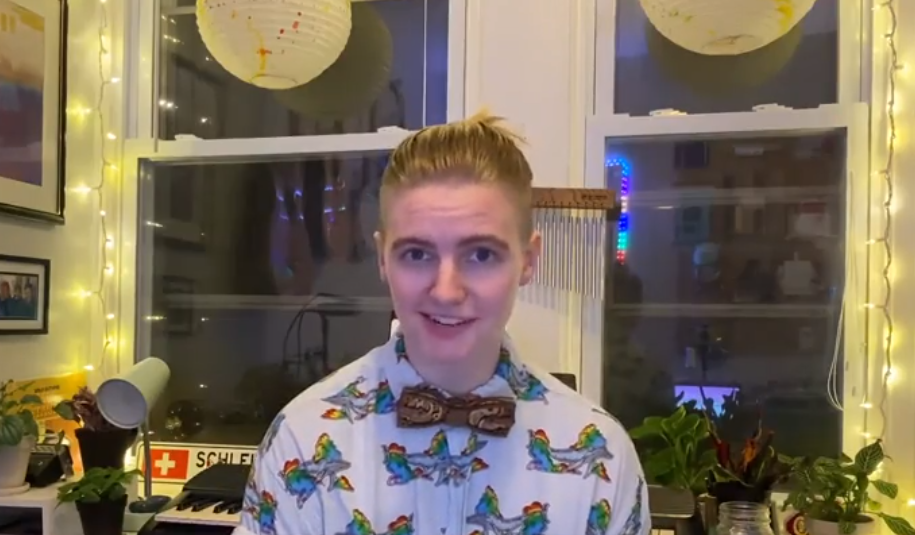Celebrate diversity this #LGBTQSTEMDay

Today, November 18, is LGBTQSTEM Day, a day designated to celebrate the diversity which makes the world of STEM a better and more inclusive place. This year, the Society’s Middle School Research Teachers Conference (MSRTC) held a session wholly dedicated to discussing the importance of creating space for LGBTQ students.
According to the 2017 National School Climate Survey conducted by GLSEN, 59.5% of LGBTQ students felt unsafe at school because of their sexual orientation, 44.6% because of their gender expression and 35.0% because of their gender. Marian Bechtel (ISEF 2010-2011, STS 2012), a STEM educator based in Philadelphia, Pa. who uses they/them pronouns, started their MSRTC session on supporting LGBTQ students in STEM with these concerning statistics. Besides underscoring the need for transition and transgender inclusion in science, Marian also outlined concrete action items for educators to help advance the issue.
To start, Marian explained how heteronormativity and cisnormativity can push LGBTQ students away from STEM. These beliefs assume that attraction to the opposite gender is the “normal” sexual orientation, and that everyone’s gender identity aligns with their assigned sex at birth. “These often-unspoken assumptions can be really harmful and silence a lot of conversation, especially in STEM spaces around LGBTQ identities,” Marian said. “There’s so many identities that exist outside of this binary and they aren’t new. They aren’t a fad. People who have existed outside of the binary have been here forever all throughout the world.”
Marian’s own experiences speak to how demoralizing prevailing heteronormative and cisnormative attitudes can be for LGBTQ individuals. “I still struggle to feel seen and respected in STEM spaces,” they shared. “When I’m misgendered in STEM spaces, I feel pushed away from science and it is still really hard for me to correct people and to advocate for myself. It’s taken a lot of work and a lot of practice for me to simply correct a colleague on my pronouns. Sometimes I still don’t and it hurts every single time.”
For middle and high school students navigating different dimensions of their identities, it can be even more difficult. “Imagine the harm that microaggressions can have or the harm that it does to LGBTQ youth in STEM spaces when they may not have community and they may not have the practice in advocating for themselves. What might seem like a minor mistake to some could completely drive youth away and shut them out if not properly addressed.”
What can educators do to validate LGBTQ students’ sense of self and make space for them in STEM? Marian reviewed six actions all educators can take:
- Introduce yourself with your pronouns. This normalizes it for others in the classroom to do the same.
- Provide students with periodic questionnaires that include open-ended questions to get to know them. Marian explains that, “This can allow LBGTQ students to share parts of their identity if they want to.”
- When discussing research, include examples of researchers with different identities. “Talk about how having different kinds of people doing research is crucial to seeing problems and questions in science from many angles.”
- Avoid using gendered terms to refer to groups of students. Marian suggested using “friends,” “scientists” or “team.”
- Practice using singular “they” and other pronouns. “Using somebody’s correct pronouns is really important because it’s a way of seeing and acknowledging them and respecting them,” Marian emphasized.
- Advocate for trans inclusive polices at your schools and workplaces. “When students feel supported and they feel seen as their whole selves, they will spend less time feeling ostracized, feeling invalidated, fighting for respect, and they will get to spend so much more time exploring ideas and asking questions that they then feel inspired to pursue through STEM research.”
Creating more LGBTQ-inclusive STEM spaces won’t happen overnight, but educators can take solace in knowing that they aren’t doing this alone. “So much of this is a lifelong journey and commitment to keep learning, fighting and supporting,” summed up Marian. “We have to acknowledge that the identities of those doing research and the unique perspectives that they bring to STEM is what leads to better science.”


